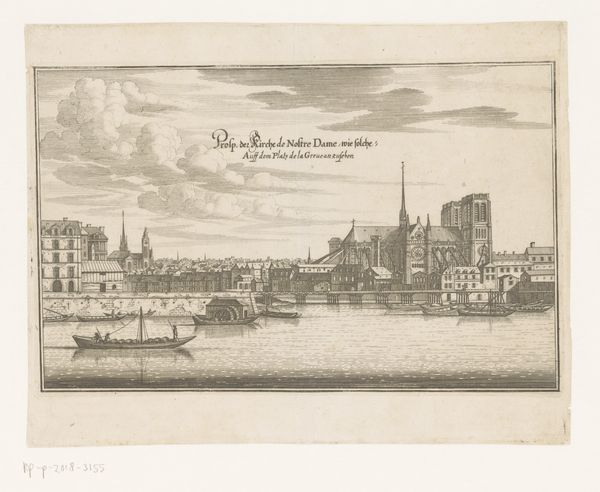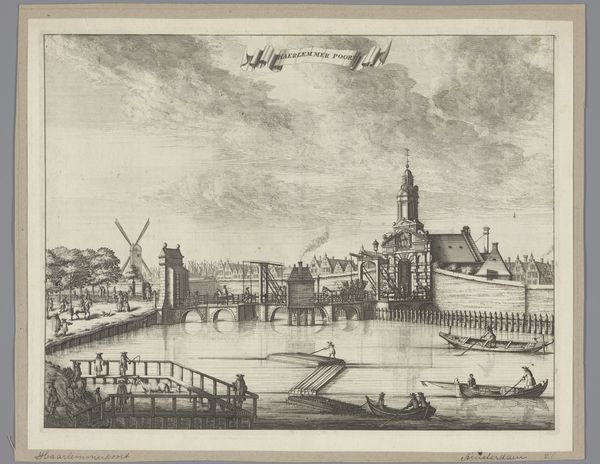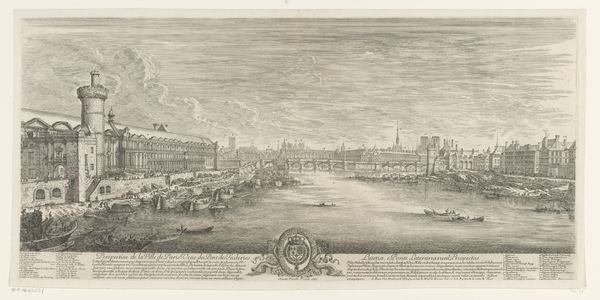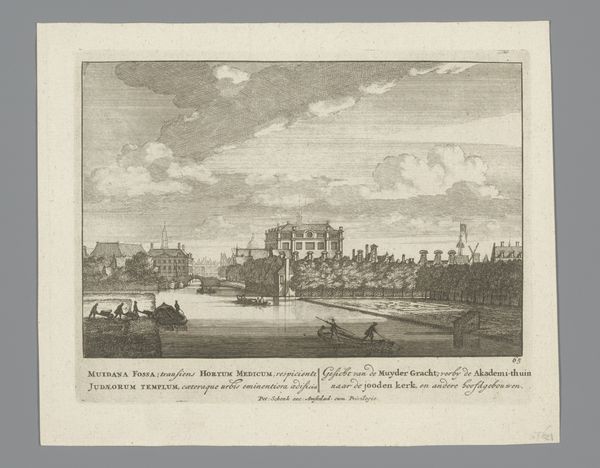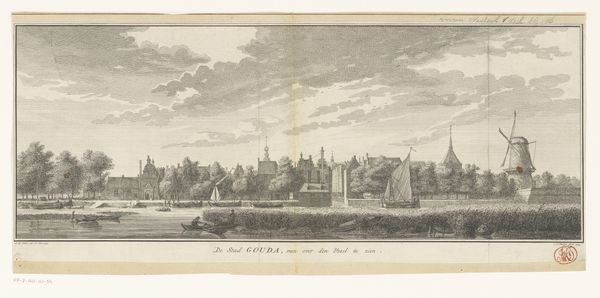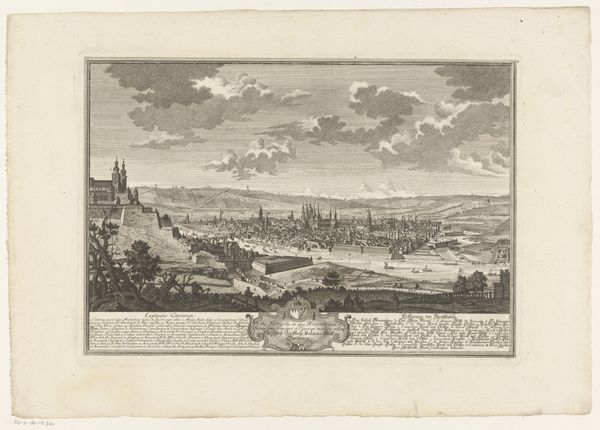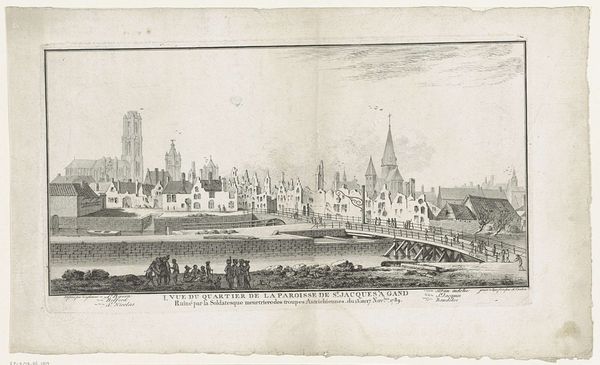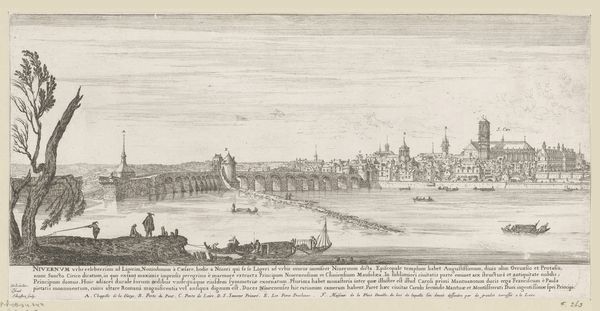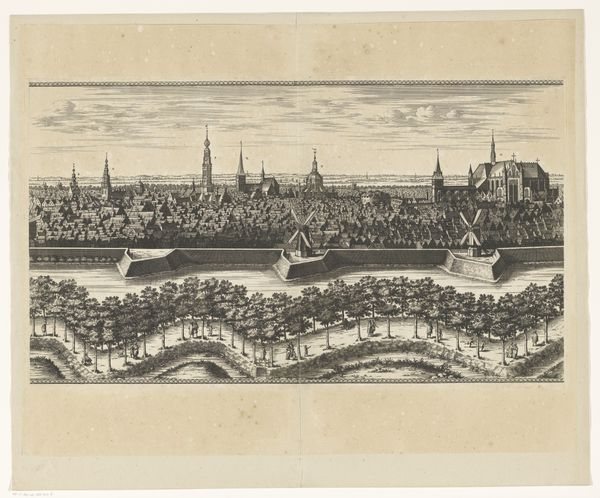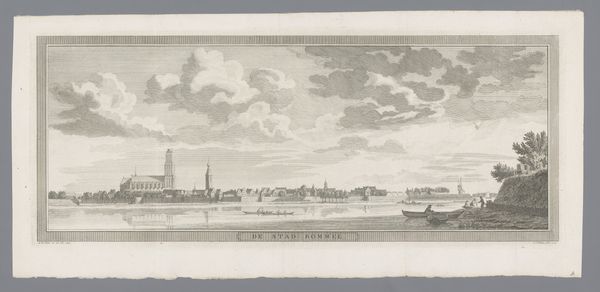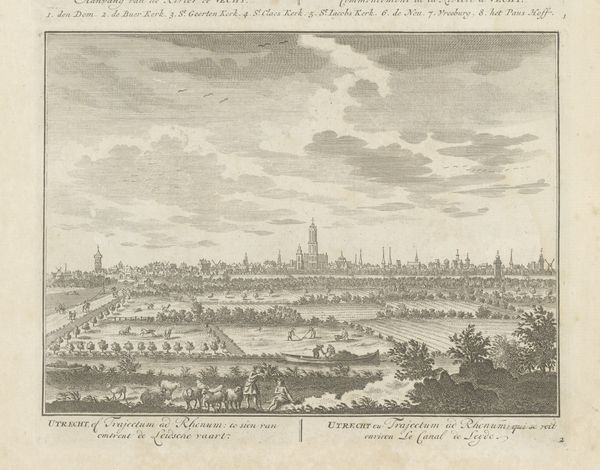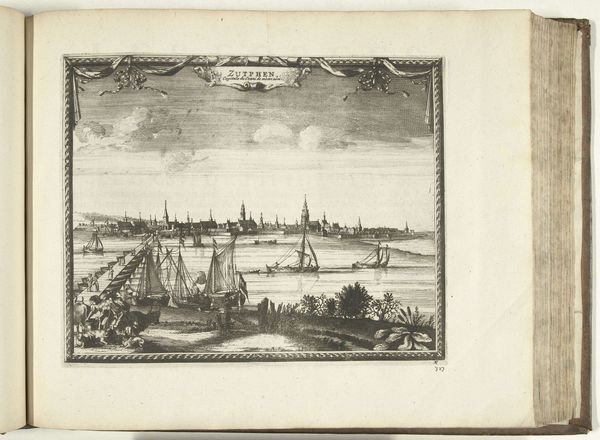
print, engraving, architecture
#
architectural sketch
#
aged paper
#
baroque
# print
#
old engraving style
#
landscape
#
cityscape
#
engraving
#
architecture
Dimensions: height 213 mm, width 268 mm
Copyright: Rijks Museum: Open Domain
Curator: Immediately, there's this feeling of serene distance, almost detachment. The light is diffuse, and the whole cityscape seems softened by the engraving style, muted by age. It looks so tranquil and stately, removed from the hubbub one expects of a city. Editor: That's a beautiful observation. What we're seeing is an engraving from 1702 titled "Gezicht op St Paul's Cathedral, te London," or "View of St. Paul's Cathedral in London." It resides in the Rijksmuseum and, fascinatingly, the artist remains anonymous. Prints like this served a crucial public function in the period, shaping how places were perceived and understood across geographical distances. Curator: It’s true – those crisp, meticulous lines offer not just a rendering of physical space, but also transmit certain virtues: order, progress, the burgeoning empire reflected in a polished visual language intended for broad consumption. St. Paul’s dominating the horizon projects power – temporal and spiritual – onto the cityscape. Editor: Exactly. Consider what was happening politically at the time. Queen Anne had just ascended the throne; England was on the cusp of solidifying its power on a global scale. Images of its capital were integral to crafting a national identity, a visual propaganda meant to project solidity and grandeur. Even the framing border suggests contained power. Curator: Yet, there's something wistful. This calm feels retrospective, imbued with both hope and the weight of events that have already reshaped collective identity by the 18th century's doorstep. Water and sky, dominating two thirds of the engraving’s height, act like mirroring consciousness: both reflection of, and quiet, observant contrast to, human effort. Editor: And think about who consumed these prints! People beyond London, spreading visual currency of political intention, constructing narratives of a center that was, in its own time, relentlessly growing and reshaping itself. Curator: Images, whether iconic or informational, play a potent role in mythmaking, anchoring perceptions and perpetuating the dominant narrative. This view freezes the symbolic weight and architectural dominance of St Paul's Cathedral right at the moment when new, post-Wren structures were signaling a modern identity for London after the great Fire. Editor: It also quietly suggests that how London appeared to those far away from it, as an image in circulation, was as carefully managed as any other form of imperial expansion. Curator: Precisely – the city rendered not just as a location, but a carefully constructed symbol. Editor: An enduring reminder of art’s intersection with public history and politics, then.
Comments
No comments
Be the first to comment and join the conversation on the ultimate creative platform.
